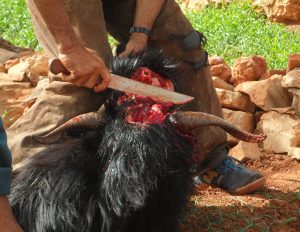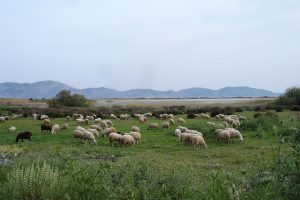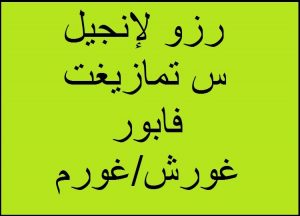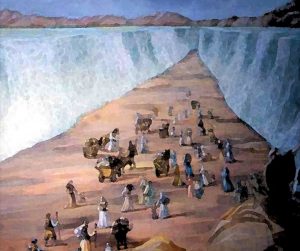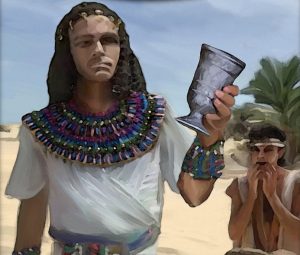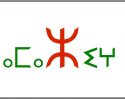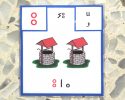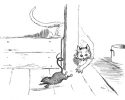مايْ گان إمازيغن؟
تّـاريخ ن إمازيغن
حما أد تازنت لفيلم كول (س تفرنسيست) زݣ لانتيرنيت غر لبورطابَل نـّش نَغد غر لكومبيوتر نّـش، نقّر دا (م.ب.4 – 1 فيشيايْ – 411 MO).
Histoire des Imazighen زݣ tamaz video خف Vimeo
تـّاريخ: أگلـّيد أمازيغ ن رّومان
سبتيموس سيفيروس: أگلـّيد أمازيغ ن رّومان
“Septime Sévère (Lucius Septimius Severus Pertinax) (11 avril 145 – 4 février 211) est un empereur romain d’origine africaine (Berbère), qui règne de 193 à 211. Avec lui commence l’arrivée au pouvoir de provinciaux d’ascendance non romaine et la dynastie des Sévères dont il est l’éponyme. Il est le seul empereur né dans la province d’Afrique.”
Pour plus d’information, voir le lien suivant, d’où est tiré le paragraph ci-dessus:
تيفيناغ س ﺅفرّج
لقيست ن وهَـقّـار
گ تـِـزْووري ن دّ ونـيـت إگا أهـَـقـّـار ﺅمـْـلـيـل، يازَن غـورْس نّـْـبـي ، صـَـلـّـى الله عـْـلـيـه
وَ سـَـلـَّـم ، إنـّـاس ” أغاش دّ ْهـَـب ، شـْـفـيـت إ إنـْـسـَـلـْـمـَـن ؛ أغاش تـِـخـّـويـيـن شـْـفـيـتـَـنـْـت إ إرومـيـن .”
.”
إكـَّـر نـْـتـّـا ، إشـْـفاسـَـن إ إرومـيـن دّ ْهـَـب ، إشـْـف إ إنـْـسـَـلـْـمـَـن تـِـخـّـويـيـن. إمـْـسـَـخـْـت رَ بـّـي إعايـْـد إجـّـيـج نـَّـس أبـَـرْ شان. أدّ ايْ إسـَـوال لا إتـّـيـنـي ” عاق عاق ! ” زَعـْـما ” خـّـيـشـْـتـي، غـَـدْ رَخ إ لـْـمانـْـت
Idda-d wawal-ad zeg E. Laoust, Cours de Berbère Marocain: Dialecte du Maroc Central, Paris, 1939, p. 240, numéro 1.
أوال ن تمازيغت


Dictionnaire Tamazight-Français Parlers du Maroc central
Auteur: Miloud Taifi

Dictionnaire Tamazight-Arabe
Auteur: Mohamed Chafik
Liens sur Tamazight et Tifinagh
Téléchargez des polices de l’alphabet Tifinagh-Ircam pour l’ordinateur
École Amazighe : des jeux pour apprendre l’alphabet tifinagh et la langue tamazight
Ecoutez l’alphabet tifinagh
Swathmore.edu : bibliographie linguistique
Wikipédia :
Demande d’une Wikipédia en tamazight
Bibliomonde.com : les langues du Maroc
Tableau du Tifinagh-Ircam Table de Tifinagh – Ircam
لامتال إمازيغـن
نزرخاشتـّـين … ماتـّا نـْـتـّـا ؟
نـَقـَّر خف ﺅسقسي حما أد تـقراد لجَواب نـّس.
1. نزرخاشتـّين: لا تـّاوي أوال ، ﺅر دا تساوال.
2. نزرخاشتـّين: إبّي يامان ﺅر إمِّغ.
3. نزرخاشتـّين: ﺅر دا تـّارو غاس س إسفوروضن.
4. نزرخاشتـّين: لاس إدّال إسْوي ، ﺅر داتّ إتـّاسي ﺅلـْغـَم.
5. نزرخاشتـّين: إلولاد س تمارت، إمّوت بلا تمارت.
6. نزرخاشتـّين: تـَگـْدَم دا ﺅر تـَـنـْغـِل.
Amazigh culture has a tradition of riddles. These riddles are told with a specific formula, somewhat like
the English: “What’s black and white and read all over? A newspaper.” First, an introductory phrase is
given, announcing “I’m going to tell you a riddle.” Then one or two short statements are made. These
are not framed as questions but as statements. However, it is implied that the listener must then
guess what object is being described by the cryptic statements.
The introductory phrase is:
Nzerx-ac-tt-i-n
nzerx + ac + tt + i + n
first person indirect object direct object “i” sound “n” of farness
singular “past” pronoun: 2 m.s. pronoun: 3 f.s. added for
conjugation of “to you” “it,” that is, pronunciation
the verb “nzer” the riddle
Notice the presence of the indirect and direct object pronoun as well as a direction particle all with
one verb. The only thing that changes in this introductory phrase is the indirect object pronoun, which
may be ac , am , awen , or awent depending on who is being addressed. The verb nzer here functionally
means “to tell a riddle” and technically means just “to tell”: “I tell it to you.”
There are some regional variations: some areas use the masculine third person singular direct object
pronoun t (without the doubling of the consonant) instead of the feminine tt ; when that is used sometimes
the i for pronunciation is not added; some regions use slightly different indirect object pronouns (like
ak , with a hard or a fricative “k” sound, instead of ac ); and sometimes there are some slight changes to the
verb. Some regions use ɣ instead of x for the first person singular verb ending. Some regions also modify
some of the verb consonants or use a different verb. There are at least five
variations: bzer , zunzer, zuzzer , ḥeji , and qqen.
So, you say the introductory phrase. Then you say the cryptic statements. You can leave it at that, or you can
add a phrase like: Mag-gmes? or Matta ntta? (What is it?) or Ini mag-gmes or
Ini matta ntta (Say what it is.). Remember if the “it” you are talking about is feminine or plural, these
questions change to things like: May tmes? or Matta nttat? etc., according to the gender and
number of the “it.”
Most of these traditional riddles are virtually impossible for an outsider to guess correctly. They
often involve intricate details of agricultural and nomadic life.
Ddan-d iwaliwen-ad zeg E. Laoust, Cours de Berbère Marocain: Dialecte du Maroc Central, Paris, 1939, p. 269.
1. تـَبْراتّ
دّو غر أفالـّا ن توريقـت
2. أمالو
دّو غر أفالـّا ن توريقـت
3. تـَگـْارت
دّو غر أفالـّا ن توريقـت
4. تـَـسْرافت
دّو غر أفالـّا ن توريقـت
5. أگـَرْتيل
دّو غر أفالـّا ن توريقـت


